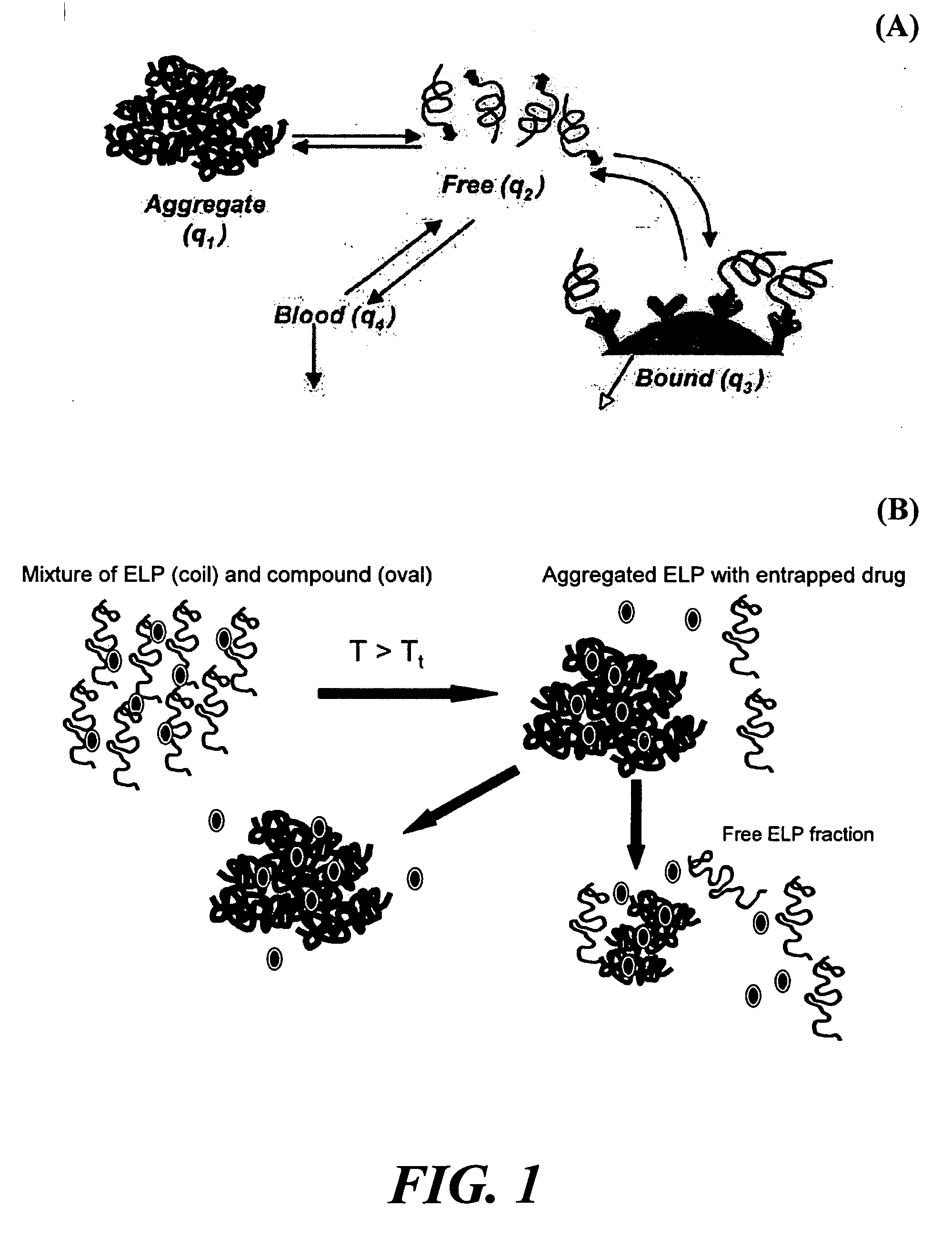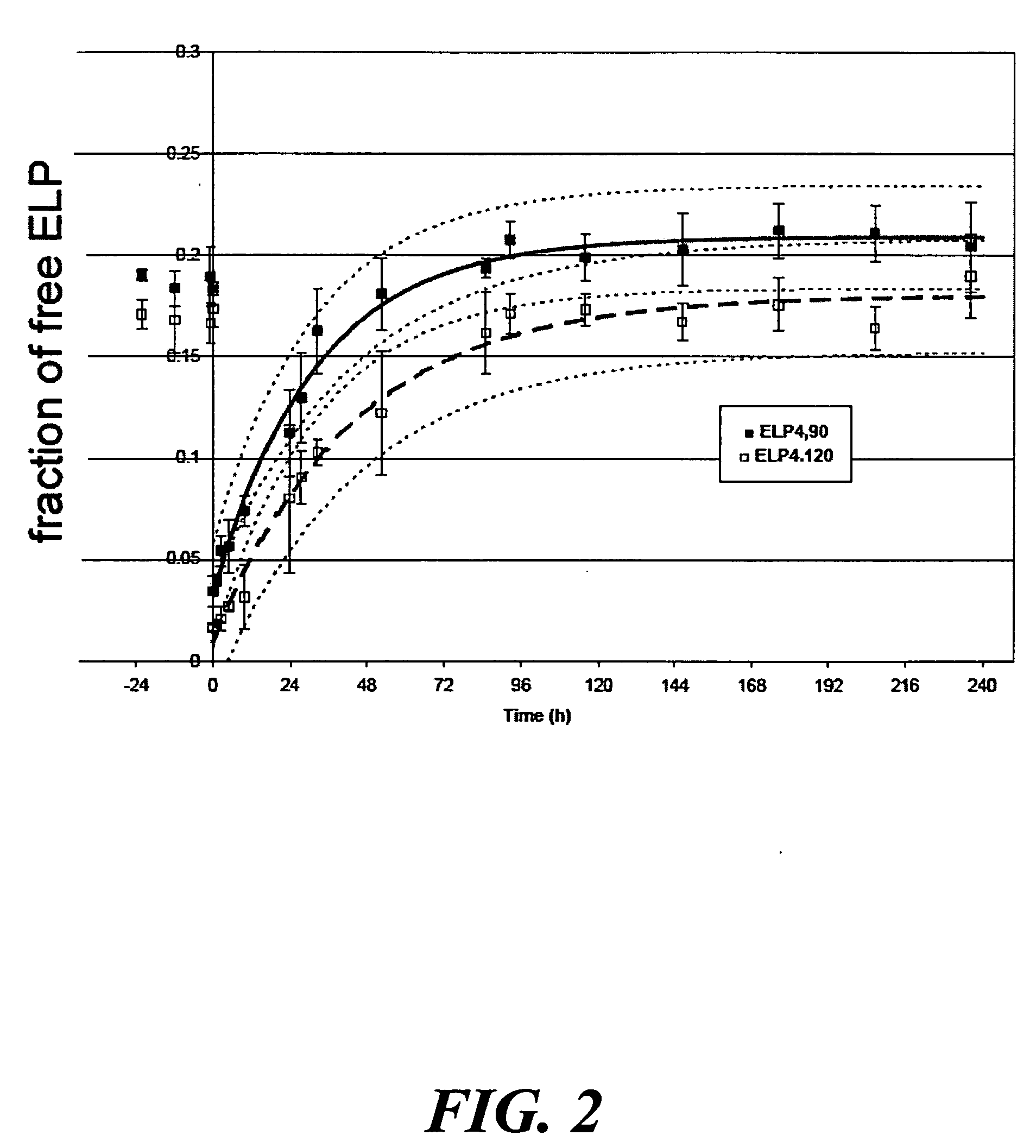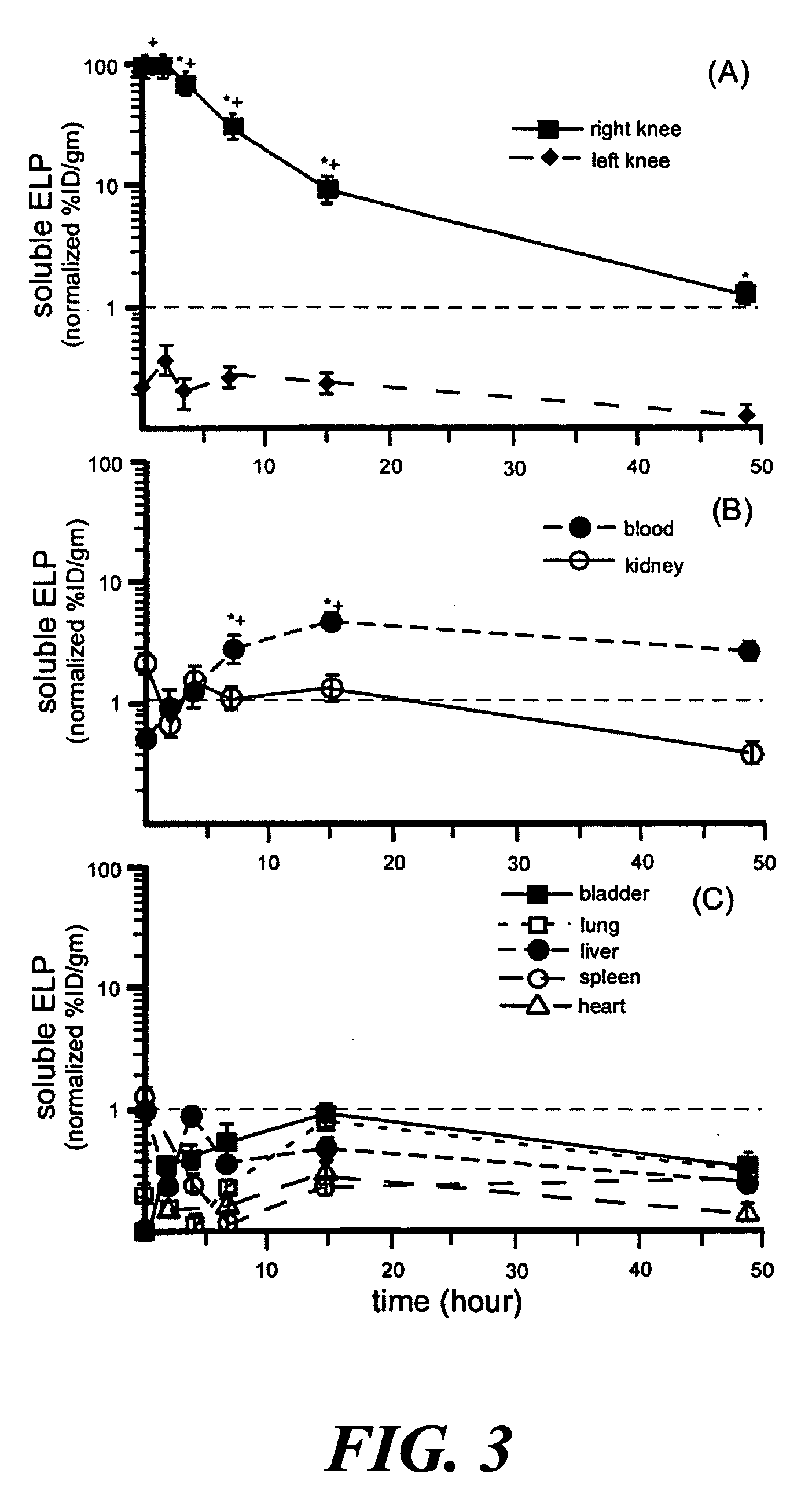Direct drug delivery system based on thermally responsive biopolymers
a biopolymer and direct drug technology, applied in the direction of drug compositions, peptides, other medical devices, etc., can solve the problems of frequent adverse conditions, adverse side effects, and compromise the long-term intrinsic repair process of joint degeneration
- Summary
- Abstract
- Description
- Claims
- Application Information
AI Technical Summary
Benefits of technology
Problems solved by technology
Method used
Image
Examples
example 1
In Vitro ELP Disaggregation and Peptide Release
[0052] Elastin-like polypeptides (ELPs) or bioelastic polymers were evaluated for an ability to provide sustained release of “free” polymer from aggregate form as a proof-of-concept of the proposed delivery system for the treatment of localized diseases, such as osteoarthritis. The drug delivery system utilizes the unique ELP properties of rapid thermally-induced aggregation to form large particles, followed by sustained release of the ELP from the bulk aggregated large particles, termed a “free” form. To evaluate this, two ELP molecules were synthesized utilizing genetic engineering techniques and thermally purified: (1) ELP4-90=[(VPGVG)10]9 (SEQ ID NO:1), Tt=30.6° C., MW=37 kDa; and (2) ELP4-120 =[(VPGVG)10]12 (SEQ ID NO:2), Tt=28.6° C., MW=49 kDa, in accordance to known techniques (see U.S. Pat. No. 6,699,294 to Urry and U.S. Pat. No. 6,852,834 to Chilkoti). For the in vitro study, 1.5 ml of either ELP at a concentration of 30 mg / ml...
example 2
Biodistribution of ELP after Intra-Articular Injection
[0054] The biodistribution and joint half-life of an aggregating ELP4-120 ([(VPGVG)10]12, SEQ ID NO:2, Tt1(VPGAG)8(VPGGG)7]10, SEQ ID NO:18, MW 61 kDa, Tt>50° C.). ELPs following intra-articular injection were evaluated in a rat animal model. The ELPs were labeled with [14C] to yield a specific activity between 32-37 mCi / mmole. The labeled ELP was dialyzed, sterile filtered (0.22 μm filter) and a volume of 30 μl at ˜650 μM of either peptide was injected into the joint cavity of the right knee of Wistar rats. After injection, the animals were housed in a cage for up to 4 weeks. At each time point five rats were sacrificed, their right and left knee (synovial fluid, meniscus, cartilage, synovium), blood, heart, lung, liver, spleen, kidney, and bladder were collected and digested. The radioactivity of each tissue was determined using liquid beta-scintillation counting. Total counts per tissue weight were measured for each animal an...
example 3
Demonstration of Entrapment
[0058]FIG. 6 demonstrates entrapment by the methods and compositions of the present invention. FIG. 6 shows results for quantifying radiolabeled compound released to solution after mixing with ELP in vitro. [3H]rhIL1Ra at 2.5 micrograms / ml was mixed with different ELP formulations of different concentrations at 37° C. (ELP4-120 [(VPGVG)10]12, SEQ ID NO:2 and ELP5 [(VPGVG)6(VPGKG)]16, SEQ ID NO: 19). ELP solutions were prepared at concentrations of 0 mg / ml (control), 20, and 50 mg / ml in a total reaction volume of 200 microliters. The ELP-IL1Ra mixture was observed to complex into an aggregate. Aliquots of supernatant (5 microliters) were assayed over time for [3H] via scintillation counting as a measure of rhIL1Ra concentration in the supernatant. Measurements were normalized to control (0 mg / ml) to determine a %free rhIL1Ra in solution=(CPM of sample / CPM of control)×100. Data are stable within 24 h of entrapment; data shown here at 96 hours of equilibrati...
PUM
| Property | Measurement | Unit |
|---|---|---|
| Temperature | aaaaa | aaaaa |
| Therapeutic | aaaaa | aaaaa |
| Frequency | aaaaa | aaaaa |
Abstract
Description
Claims
Application Information
 Login to View More
Login to View More - R&D
- Intellectual Property
- Life Sciences
- Materials
- Tech Scout
- Unparalleled Data Quality
- Higher Quality Content
- 60% Fewer Hallucinations
Browse by: Latest US Patents, China's latest patents, Technical Efficacy Thesaurus, Application Domain, Technology Topic, Popular Technical Reports.
© 2025 PatSnap. All rights reserved.Legal|Privacy policy|Modern Slavery Act Transparency Statement|Sitemap|About US| Contact US: help@patsnap.com



